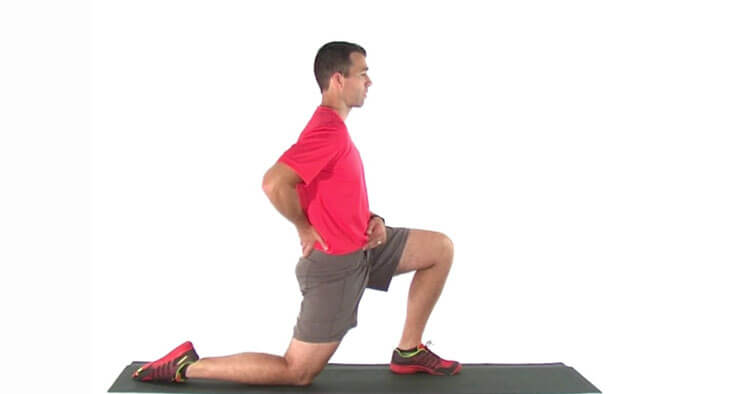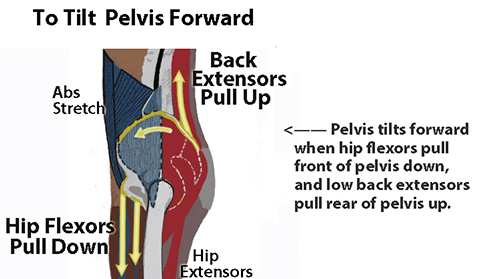Muscle Pain and Tendinopathy
Muscle Of The Week: The Hip Flexor
Hip Flexors: Frequently Tight Not Weak
In my Sydney physio practice I typically find that the majority of the problems the general population experience involving their hip flexor muscles don’t originate from a lack of strength, but from a lack of flexibility. Prolonged and repetitive sedentary postures keep the hip flexor muscles in a constantly shortened position, sitting all day in the office and driving or commuting to and from work may over time cause the muscle to shorten. Tightening of the hip flexors will potentially limit extension motion in the hip, as well as pull on the spine and pelvis. The origin of the hip flexor muscles coming from the spine and pelvis means that tightness of this powerful muscle group has the potential to impact static and dynamic postures and ultimately act as a potential source or contributor to the onset, or aggravation of lower back pain.
Tight, or overdeveloped hip flexors may contribute to low back pain through the forces they impart on the spine, or through drawing the pelvis into a forward tilted posture. A forward tilted pelvis often labeled as an anterior pelvic tilt changes the tension on many of the soft tissues in the pelvis and often results in an increase in the “normal” lumbar lordosis. An increased lumbar lordosis (increased curve of the lower back) can alter low back biomechanics and be a potential source of lower back pain in some individuals.
Management of tight or over developed hip flexors can be achieved by stretching the hip flexors, strengthening the abdominal muscles in an attempt to counteract the powerful forces on the spine and pelvis these hip flexors can bring about. Potentially reducing any resulting anterior pelvic tilt and improving the “balance” between the muscles of the hip region.
Hip Flexor Muscle Strengthening Exercises
Often I find that most people do not require strengthening their hip flexors if general public, many athletes may benefit from stronger hip flexors a good example of this would be among others athletes playing sports involving kicking. If strengthening the hip flexor muscles were considered relevant the main movement roll your hip flexors perform is to bring your knee up towards your chest, or when the legs are fixed to cause bending motion at the trunk.
Exercises that help to directly strengthen the hip flexors include:
- Leg raises which can be performed lying on your back one leg at a time or bilaterally.
- Hanging leg raises again depending on trunk strength can be performed as a single or double leg exercise.
- Sit-ups particularly when the legs are fixed then pressure holding the feet anchored can allow the hip flexors to act on this stable base to assist the abdominal muscles in creating the crunch or sit up motion.
- Active hip flexion, this could be performed in a variety of positions depending on someones functional needs and base strength, and could be done as an active movement, sustained hold or with added resistance via a weight, or theraband.
Athletes that may require greater than average hip flexor muscle strength includes sports people like:
- Cyclists
- Kickers on a football team in American football, rugby league, rugby union
- Soccer and AFL players
- Martial artists
Stretches To Help Lengthen The Hip Flexor Muscles
As previously mentioned inactivity of sitting at a desk all day can result in tight hip flexors, this can potentially contribute to causing or exacerbating low back pain. As a muscle group the hip flexors can be a tricky area to stretch and lengthen.
Examples of a few simple hip flexor stretches include:
- The kneeling hip flexor stretch. This is the classic stretch for these muscles, where the starting position for this is in kneeling with one knee on the floor and the other foot in front (both knees in this position will be roughly bent at a 90 deg angle). The care with this stretch is not to increase any anterior pelvic tilt as you move forward into the stretch, therefore isolating the tension to the muscles in the front of the hip and not simple arching the back.
- The glute bridge stretch is another great exercise for opening up the front of your hip and creating a gentle stretch for the hip fleoxrs with the added bonus of being a strengthening exercise for your glutes at the same time.
- Opening up your hips with the yoga posture known as the pigeon pose can stretch out the hip rotators on one side whilst at the same time opening up your hip flexors on the opposite side. Another good option to assist in lengthening or stretching out any tight hip flexors.
Disclaimer: Sydney Physio Clinic provides this information as an educational service and is not intended to serve as medical advice. Anyone seeking specific advice or assistance on Muscle Of The Week: The Hip Flexor should consult his or her physiotherapist, general practitioner or otherwise appropriately skilled practitioner.



